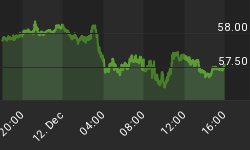In the current economic recovery/expansion, there has been a sharp rebound in corporate profits. Chart 1 shows that corporate profits with inventory valuation and capital consumption adjustments relative to nominal GDP are back to their 1997 highs. And, similar to what they did frequently in the 1990s, nonfinancial corporations are running a financial surplus - i.e., they are spending less than they are earning (see Chart 2).
Chart 1
Chart 2
As Charts 3 and 4 show, capital spending growth is positively correlated with both corporate profit growth and household spending growth. The highest correlation is obtained when year-over-year profit growth and household spending growth lead capital spending growth by two quarters (indicated by the "-2" in parentheses). This positive correlation between capital spending and corporate profit growth and household spending growth would seem to make sense. If profits are growing faster, corporations would not only have the financial wherewithal but the economic incentive to step up the investment in their businesses. Likewise, if household spending growth is increasing, corporations would see the demand for their output growing faster, which would provide an incentive for them to increase the scale of their operations.
Chart 3
Chart 4
The $64 question is: If growth in household spending slows in 2006, which I believe it will, can capital spending growth increase due to the positive impact from corporate profit growth?
Let's go to the regression analysis. In the table below, CAPEXYY is the year-over-year percent change in nominal private nonresidential fixed investment expenditures, HHSPENDYY is the year-over-year percent change in the sum of nominal personal consumption and residential investment expenditures and PROFITSYY is the yea-over-year percent change in nominal pre-tax corporate profits with inventory valuation and capital consumption adjustments. The minus 2 in parentheses signifies that the independent variable (household spending or profits) leads the dependent variable (capital spending) by two quarters.
Table 1: Regression Analysis
Notice that the coefficient on household spending growth (1.51, rounded) is almost 8.4 times as big as the coefficient on profit growth (0.18, rounded). Is profit growth likely to be 8.4 times as big as household spending growth? The data in Chart 5 are the ratios of the year-over-year percent change in corporate profits to the year-over-year percent change in household spending. The median ratio is 1.13 and the maximum ratio during the 1955-2005 period is 5.21.
Chart 5
In conclusion, household spending growth historically has dominated capital spending growth as compared with corporate profit growth. If history is any guide, a slowdown in household spending growth in 2006 is likely to lead to a slowdown in capital spending growth.
















